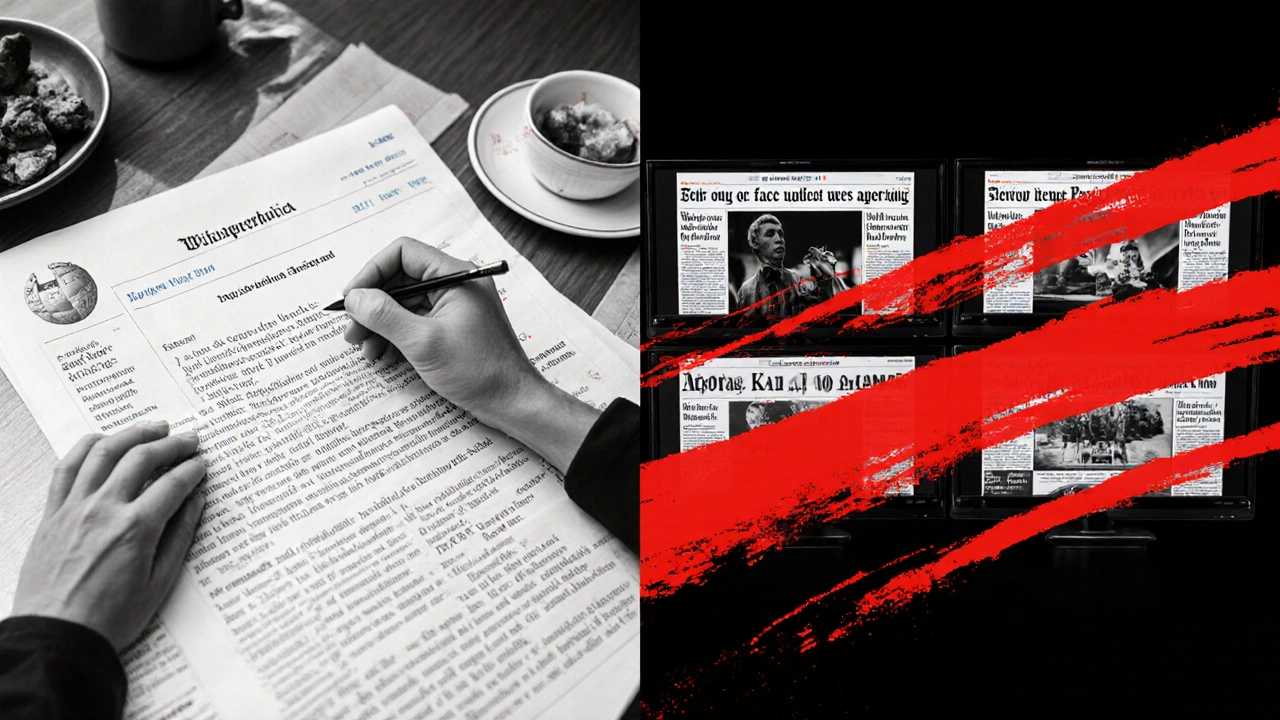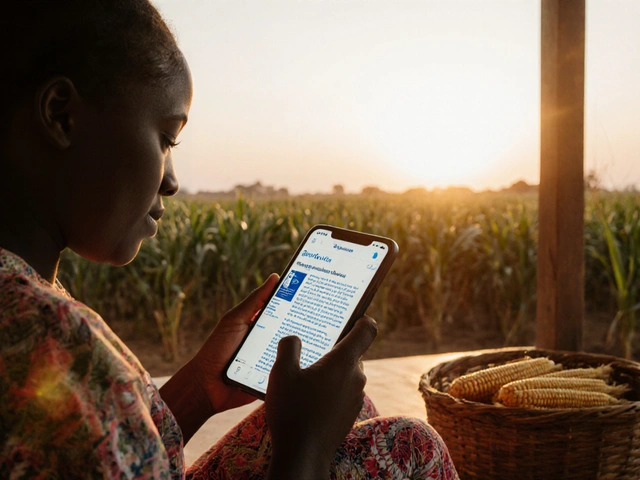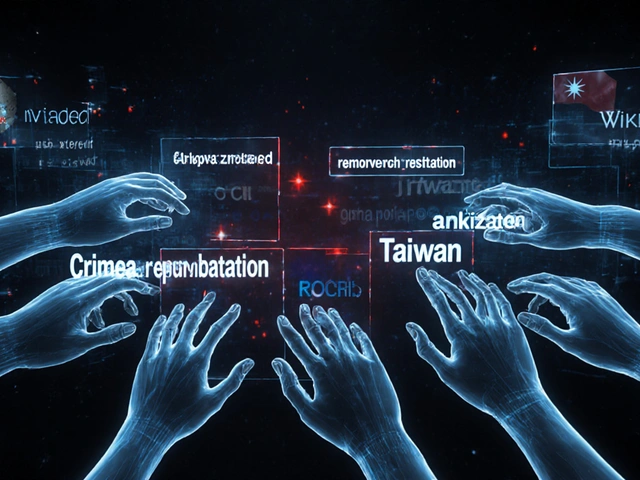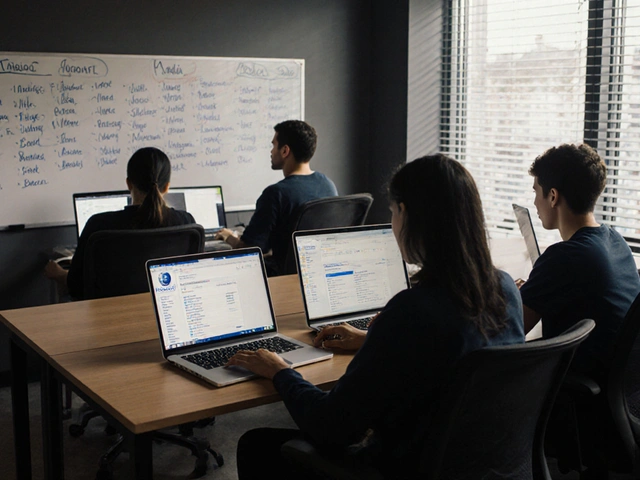
Wikipedia is the first place most people go when they need to understand something fast. Journalists are no different. You’re on deadline, you need context on a new policy, a public figure’s past, or how a scientific term works-and Wikipedia gives you a clear, well-structured summary in seconds. But here’s the question no one asks out loud: Is it ethical to use Wikipedia as a source in professional journalism?
Wikipedia Isn’t a Source-It’s a Starting Point
Every journalism textbook says: don’t cite Wikipedia. But that advice misses the point. The real issue isn’t whether you quote Wikipedia-it’s whether you use it as a substitute for original reporting. Wikipedia is a compilation. It’s built by volunteers, edited in real time, and often cites primary sources you can track down. That’s not a flaw-it’s a feature. The problem happens when journalists copy text from Wikipedia without checking the original references, or worse, treat a Wikipedia summary as fact without verifying it.
Take the 2021 U.S. Capitol riot. Early Wikipedia pages described the event with vague language like “unrest” or “protest.” By the next day, after dozens of edits from historians, legal experts, and eyewitnesses, the page evolved into a detailed, sourced account. If you’d quoted the first version, you’d have misrepresented the event. But if you’d used Wikipedia to find the names of key figures, the timeline of events, or links to court documents and news archives-you’d have done exactly what it was designed for.
When Wikipedia Gets It Wrong (And How It Happens)
Wikipedia isn’t perfect. In 2018, a false claim about a Canadian politician’s death spread across multiple news outlets because reporters copied Wikipedia without checking. The error had been introduced by a single user who edited the page during a lunch break. It stayed live for 11 hours. Four major publications ran the story before corrections were made.
That’s not an anomaly. A 2023 study by the Reuters Institute found that 22% of journalists admit to using Wikipedia as a direct source at least once a month. Of those, 37% said they didn’t verify the information with primary sources. The risk isn’t just misinformation-it’s institutional damage. When a trusted news organization repeats an error from Wikipedia, readers lose trust. And once trust is broken, it’s harder to rebuild than to fact-check a page.
Wikipedia’s editing system is open, which means anyone can change it. That includes editors with agendas, bots with bugs, or well-meaning amateurs who misinterpret a study. A 2024 analysis by the University of Wisconsin-Madison showed that articles on political figures, public health, and legal topics had the highest rate of unverified claims in the first 48 hours after major news events.
How to Use Wikipedia Ethically
There’s a right way to use Wikipedia-and it doesn’t involve copy-pasting.
- Use it to find leads: Look at the references at the bottom of the page. Those are your real sources. If a Wikipedia article cites a peer-reviewed journal, a government report, or a major news outlet, go to that source directly.
- Check the talk page: Every Wikipedia article has a “Talk” tab. That’s where editors debate accuracy, reliability, and bias. If there’s a heated argument about a claim, that’s a red flag.
- Verify the edit history: Click “View history” and see how recent the changes are. If the most recent edit was made five minutes ago by a user with no prior edits, treat the information as unconfirmed.
- Don’t quote the summary: If you’re writing about a scientific concept, don’t say “According to Wikipedia…” Say, “As reported in the Journal of the American Medical Association, based on a 2023 meta-analysis…”-then cite the original source.
- Document your process: Keep a log of which Wikipedia pages you used, what you found there, and which primary sources you followed up on. This isn’t just good practice-it’s your paper trail if someone questions your reporting.

What Newsrooms Should Do About It
Most newsrooms have no formal policy on Wikipedia. That’s dangerous. Without guidelines, journalists are left to guess what’s acceptable. Some editors ban it outright. Others let reporters use it freely. Neither approach works.
The best policy? Treat Wikipedia like a library card catalog. It tells you what books exist, but you still have to go to the shelf and read them. Newsrooms should train reporters to use Wikipedia as a discovery tool-not a citation. Include it in ethics training. Add a checklist to your internal style guide: “Did you trace the Wikipedia claim back to its original source?”
The Associated Press and Reuters both have internal memos that allow Wikipedia use only for background context and source discovery. They prohibit direct quotation. That’s the standard every news organization should follow.
The Bigger Picture: Trust in Journalism
At its core, journalism is about accountability. When you report something, you’re saying, “I’ve checked this. I believe it’s true. I can prove it.” Wikipedia doesn’t make that promise. It’s a collaborative draft. It’s not a final version. Using it as a source blurs that line.
But here’s the truth: the public doesn’t care if you used Wikipedia. They care if your story is accurate. If you used Wikipedia to find a reliable study, then cited that study correctly-your readers will never know the difference. And that’s the point. Ethics isn’t about following rules. It’s about doing the right thing, even when no one’s watching.
Journalists have a responsibility not just to report facts, but to show how they found them. If you can’t trace a claim back to its origin, you shouldn’t publish it. Wikipedia can help you find that origin. But it can’t be the destination.
What Happens When You Cross the Line
In 2022, a regional newspaper in Ohio published a story claiming a local school board member had been arrested for fraud. The source? A Wikipedia page that had been edited by a disgruntled former employee. The story was retracted within 24 hours. The paper issued an apology. The editor resigned. The school board member sued for defamation.
The damage wasn’t just legal. The paper lost 12% of its digital subscribers in the next month. Readers didn’t leave because of the error-they left because they felt misled. They thought the paper had done its job. It hadn’t.
That’s the cost of cutting corners. It’s not just about getting sued. It’s about losing the one thing journalism can’t afford to lose: credibility.
Final Rule: The Three-Step Verify
Here’s a simple method every journalist should use before publishing anything they found on Wikipedia:
- Trace: Find the original source cited in the Wikipedia article.
- Confirm: Read that source. Is it credible? Is it recent? Does it say what Wikipedia claims?
- Cite: Attribute the claim to the original source-not Wikipedia.
If you can’t complete all three steps, don’t use it. Simple as that.
Can I quote Wikipedia directly in a news article?
No. Quoting Wikipedia directly undermines journalistic credibility. Wikipedia is a secondary summary, not a primary source. If you need to use information from a Wikipedia page, find and cite the original source it references-such as a government report, academic paper, or reputable news outlet.
Is Wikipedia ever reliable for journalism?
Wikipedia is reliable as a starting point for research, not as a final source. Studies show that Wikipedia’s accuracy on scientific and historical topics is comparable to Encyclopedia Britannica-when articles have been edited for several days. But during breaking news events, edits can be rushed or biased. Always verify with primary sources before publishing.
Why do journalists still use Wikipedia if it’s not allowed?
Because it’s fast, free, and well-organized. Journalists work under tight deadlines and often need context quickly. Wikipedia gives them a clear overview of complex topics in seconds. The issue isn’t that they use it-it’s that many don’t go further to verify the information with original sources.
What’s the difference between citing Wikipedia and using it for background?
Citing Wikipedia means presenting its text as your source. Using it for background means gathering context, identifying key names, dates, or concepts, and then finding the original material to report on. The first is unethical. The second is standard professional practice.
Do major news organizations use Wikipedia?
Yes-but not as a source. Reuters, The New York Times, and the BBC use Wikipedia to find leads, identify key figures, and understand complex topics. Their internal guidelines require reporters to trace every claim back to its original source before publishing. They never quote Wikipedia directly in articles.
What Comes Next
Wikipedia isn’t going away. Neither is the pressure on journalists to produce content faster. The solution isn’t to ban it-it’s to teach better habits. Newsrooms need to stop treating Wikipedia like a dirty secret and start treating it like a tool. A powerful one-if used right.
The next time you’re tempted to copy a Wikipedia paragraph, pause. Ask yourself: Do I know where this came from? Can I prove it? Would I be comfortable defending this claim in court? If the answer is no, then you’re not ready to publish. And that’s okay. Better to wait than to mislead.






